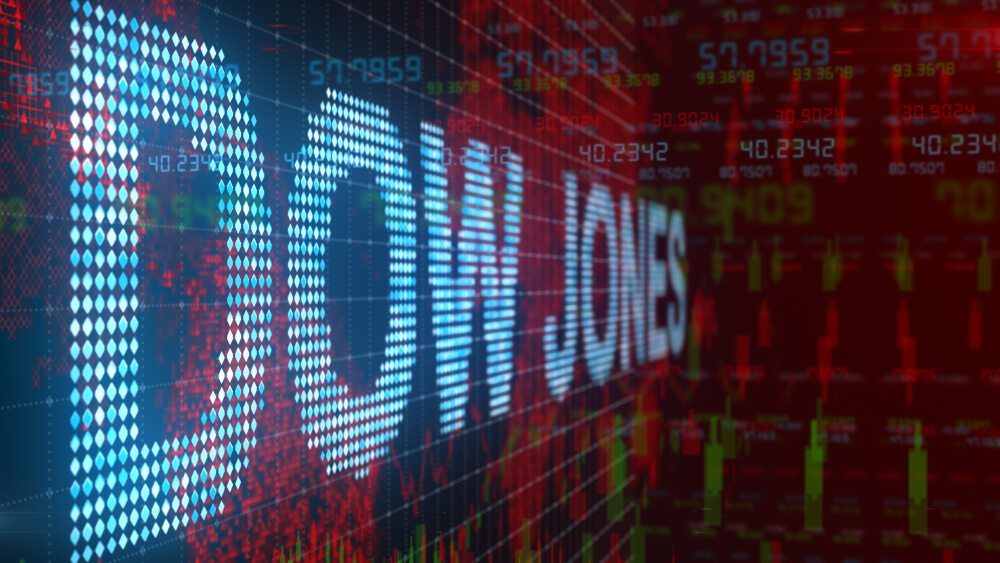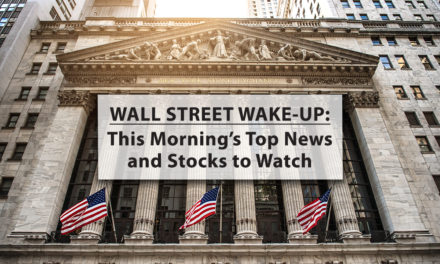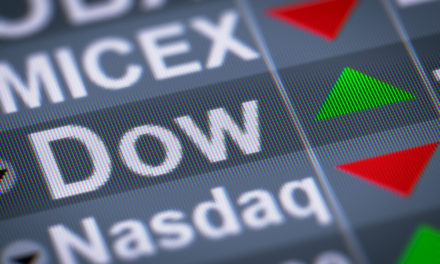Perhaps the most widely quoted U.S. stock market index is the Dow Jones Industrial Average (DJIA), and that’s why it’s important to know exactly what the Dow Jones index is and how it works.
The Dow Jones index, like the S&P 500, is used to gauge the overall health of the U.S. economy and reflect investors’ confidence in the economic performance of the nation.
But many people don’t have a clear, in-depth understanding of what the DJIA is or how it works, so Money and Markets has done the homework for you.
What Is the Dow Jones Index?
For one, the Dow Jones index is the second oldest U.S. index after the Dow Jones Transportation Average, which tracks 20 transport stocks.
Currently, the DJIA tracks 30 large, publicly traded companies on the New York Stock Exchange or the Nasdaq index.
It was created by Charles Dow and business partner Edward Jones in 1896. The DJIA originally tracked 12 companies that were all industrial.
Here are those 12 companies and what happened to them:
- American Cotton Oil became part of Best Foods.
- American Sugar was turned into Amstar Holdings.
- American Tobacco was broken up by the 1911 antitrust action.
- Chicago Gas is now part of People Energy.
- Distilling & Cattle Feeding was turned into Millennium Chemical.
- General Electric (NYSE: GE) remained in DJIA until 2018 when it was replaced by Walgreens Boots Alliance (Nasdaq: WBA).
- Laclede Gas is still in business but dropped from Dow in 1899.
- National Lead is now NL Industries Inc. (NYSE: NL), removed from Dow in 1916.
- North American was a utility broken up in the 1940s.
- Tennessee Coal & Iron was bought by U.S. Steel Corp. (NYSE: X) in 1907.
- S. Leather Pfd. was dissolved in 1952.
- S. Rubber is now part of Michelin ADR (Over-the-Counter: MGDDY).
Companies initially tracked included railroads, cotton, gas, sugar and oil entities. The reason was those industrial companies’ growth rate was significantly tied to the performance of the U.S. economy.
The Dow Jones index grew to 20 companies in 1916, then to 30 in 1928 just prior to the 1929 stock market crash, the worst crash in U.S. history.
Companies listed on the DJIA can change. Those changes happen when there are economic shifts or a particular company becomes less representative of the overall economy.
The 30 companies listed currently on the Dow are:
- 3M Co. (NYSE: MMM).
- Apple Inc. (Nasdaq: AAPL).
- American Express (NYSE: AXP).
- The Boeing Co. (NYSE: BA).
- Caterpillar (NYSE: CAT).
- Cisco Systems (Nasdaq: CSCO).
- Chevron Corp. (NYSE: CVX).
- Coca-Cola Co. (NYSE: KO).
- The Walt Disney Co. (NYSE: DIS).
- Dow Chemical Inc. (NYSE: DOW).
- Exxon Mobil Corp. (NYSE: XOM).
- Goldman Sachs Group Inc. (NYSE: GS).
- Home Depot Inc. (NYSE: HD).
- IBN Corp. (NYSE: IBM).
- Intel Corp. (Nasdaq: INTC).
- Johnson & Johnson (NYSE: JNJ).
- JPMorgan Chase & Co. (NYSE: JPM).
- McDonald’s Corp. (NYSE: MCD).
- Merck & Co. Inc. (NYSE: MRK).
- Microsoft Corp. (Nasdaq: MSFT).
- Nike Inc. (NYSE: NKE).
- Pfizer Inc. (NYSE: PFE).
- Proctor & Gamble Co. (NYSE: PG).
- Travelers Companies Inc. (NYSE: TRV).
- United Technologies Corp. (NYSE: UTX).
- UnitedHealth Group Inc. (NYSE: UNH).
- Verizon Communications Inc. (NYSE: VZ).
- Visa Inc. (NYSE: V).
- Walmart Inc. (NYSE: WMT).
- Walgreens Boots Alliance Inc. (Nasdaq: WBA).
The market capitalization of these 30 giant companies makes up about 25% of the entire U.S. stock market.
Understanding its history and the companies comprised helps investors know just what the Dow Jones index is and how works.
How to Calculate the Dow Jones Index
Every day, the Dow is reflected by a price.
That price is calculated by taking the share price of all 30 companies listed and dividing it by 30. There are things like stock splits and other considerations factored into the price as well.
The average also takes out the number of shares outstanding. That means a company with a higher share price will carry more weight than those with lower prices. It’s one of the reasons why the S&P 500 is considered a closer barometer of the overall economy.
However, both indexes are correlated, meaning they basically move together.
Knowing how to calculate the DJIA helps further explain exactly what the Dow Jones index is and how it works.
Dow Jones Milestones and Key Dates
There are several key milestones and dates for the Dow Jones index. Here are just a few:
- Nov. 14, 1972 — The first time the Dow Jones index closed above 1,000 (1,003.16).
- Oct. 19, 1987 — Black Monday sees the DJIA drop 22.6% in a global market crash.
- March 29, 1999 — The first time the DJIA closed above 10,000 (10,006.78).
- Sept. 17, 2001 — The fourth-largest drop in the DJIA — and the largest at the time — as the market slid 7.1% following the attacks of 9/11.
- Jan. 25, 2017 — The first time the DJIA closed above 20,000 (20,068.51).
- Jan. 15, 2020 — The DJIA set a new closing record at 29,030.22.
- Feb. 27, 2020 — The DJIA fell a new one-day record of 1,192 points amid the coronavirus correction.
Now that you know some of the key dates for the Dow Jones index, let’s look at how you can make money on DJIA stocks.
Making Money With the Dow Jones Index
Just like the S&P 500, the DJIA is an index, not a stock. So you can’t buy into it directly.
However, you can still make money off the index as a whole. One of the best ways is to invest in an exchange-traded fund that specifically tracks the index. Some of those include:
- SPDR Dow Jones Industrial Average ETF (NYSEARCA: DIA).
- ProShares Ultra Dow30 (NYSEARCA: DDM).
- ProShares UltraPro Dow30 (NYSEARCA: UDOW).
There are others so, as always, make sure you do your research before choosing which to invest in.
Another way to make money on the Dow Jones index is to invest in one, some or all of the companies it lists. Remember, however, that these companies can change as new market variables come into play.
Now that we have answered what is the Dow Jones index and how it works, you should be well on your way to using the DJIA to track the U.S. economy and investments.
Remember, to get the latest news and information on the Dow and other major indexes, check Money and Markets each day.
Related:
Siegel: Coronavirus Blocking Dow From 30k. Here’s When it Doubles
Disney Tanks After CEO Bob Iger Suddenly Steps Down
Dow, S&P 500 Hit New Records Despite US-China Trade Snag
Dow Hits New High on Mixed Trading Day
Dow Rockets to Record High as Stock Market Rally Continues





